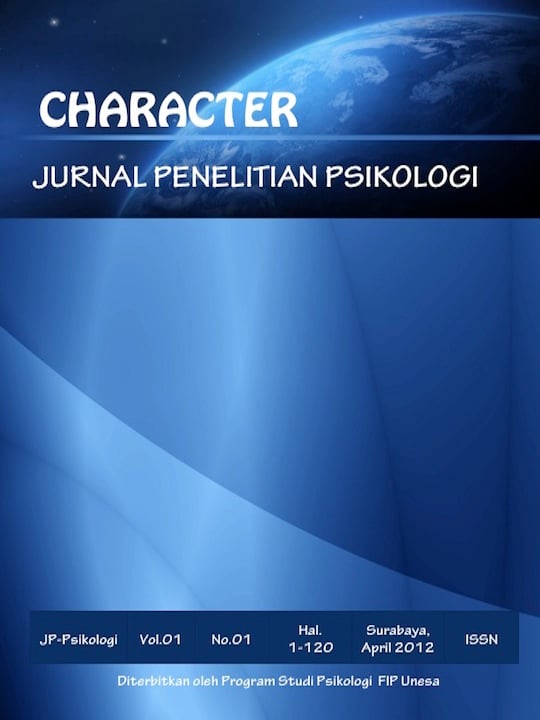PERILAKU AGRESI PADA ANGGOTA ORGANISASI PENCAK SILAT PERSAUDARAAN SETIA HATI TERATE
DOI:
https://doi.org/10.26740/cjpp.v8i1.38839Abstract
AbstrakPenelitian ini bertujuan untuk mengetahui bagaimana keanggotaan seseorang dalam organisasi bela diri dapat membentuk perilaku agresi. Penelitian ini menggunakan pendekatan kualitatif dengan metode studi kasus. Partisipan dalam penelitian ini sebanyak tiga anggota Persaudaraan Setia Hati Terate (PSHT) yang berdasarkan kriteria yang dibutuhkan, yaitu pernah terlibat dalam aksi kekerasan atau perkelahian dengan orang dari luar kelompok PSHT. Data penelitian ini dikumpulkan menggunakan metode wawancara terstruktur dan dianalisis secara tematik. Hasil penelitian menunjukan bahwa partisipan memandang agresi sebagai bentuk perlawanan diri karena merasa tidak terima diejek oleh anggota organisasi lainnya serta sebagai upaya balas dendam karena pernah dilukai oleh anggota organisasi lain. Perilaku agresi yang dilakukan partisipan berupa agresi verbal seperti mengejek, dan agresi nonverbal seperti menyerang orang lain dengan senjata tajam dan benda-benda di sekitar partisipan. Penyebab partisipan melakukan tindakan agresi karena factor situasional seperti adanya provokasi langsung, adanya stimulus berupa verbal dan non verbal yang menimbulkan respon negatif, pengaruh alkohol, pengukuhan positif dari lingkungan sekitar seperti ajakan untuk melakukan tindakan agresi dan faktor usia yaitu partisipan saat melakukan tindakan agresi masih berusia remaja. Ketika melakukan agresi, perasaan umum yang muncul adalah merasa bahwa perilakunya benar karena untuk membela diri, namun setelah berhadapan dengan pihak kepolisian partisipan merasa menyesal akan perilaku yang dilakukannya. Secara umum dapat disimpulkan bahwa perilaku agresi yang dilakukan sebagai bentuk perlawanan karena identitas kelompoknya diejek dan bentuk perilaku balas dendam yang diajak teman sesama anggota PSHT ketika merasa terganggu
Kata kunci : Agresi, anggota PSHT
Abstract
This study aims to determine how a person's membership in a martial arts organization can shape aggressive behavior). This research uses a qualitative approach with a case study method. Participants in this study were three members of the Persaudaraan Setia Hati Terate (PSHT) based on the required criteria, namely having been involved in violence or fighting with people from outside the PSHT group. The research data were collected using a structured interview method and analyzed thematically. The results showed that the participants viewed aggression as a form of self-resistance because they felt they did not accept being ridiculed by other members of the organization and as an attempt to get revenge for having been hurt by members of other organizations. Aggression behavior carried out by participants is in the form of verbal aggression such as mocking, and nonverbal aggression such as attacking other people with sharp weapons and objects around the participants. The cause of the participant to act of aggression is due to situational factors such as direct provocation, the presence of a stimulus in the form of verbal and non-verbal which causes a negative response, the influence of alcohol, positive reinforcement from the surrounding environment such as an invitation to act of aggression and age factors, namely the participants when carrying out acts of aggression are still aged teenager. When engaging in aggression, the general feeling that arises is that they feel that their behavior is right because it is in self-defense, but after dealing with the police the participants feel sorry for their behaviorIn general, it can be concluded that aggression behavior is carried out as a form of resistance because the group's identity is ridiculed and a form of revenge behavior is invited by fellow PSHT members when they feel disturbed
Keywords : Aggression, PSHT member
Downloads
Downloads
Published
How to Cite
Issue
Section
License
Authors who publish in this journal agree to the following terms:
Copyright in any article is held by the author.
The author grants the journal, publication rights with the work simultaneously licensed under a Creative Commons Attribution License that allows others to share the work with an acknowledgment of the work's authorship and initial publication in this journal.
Authors may enter into separate, additional contractual arrangements for the non-exclusive distribution of the journal's published version of the work (e.g., posting it to an institutional repository or publishing it in a book), with an acknowledgment of its initial publication in this journal.
Authors are permitted and encouraged to post their work online (e.g., in an institutional repository or on their website) prior to and during the submission process, as this can lead to productive exchanges, as well as earlier and greater citation of published work.
 Abstract views: 848
,
Abstract views: 848
, PDF Downloads: 1257
PDF Downloads: 1257





